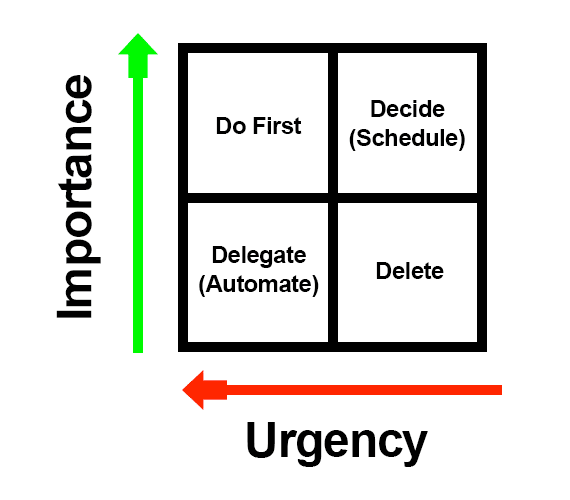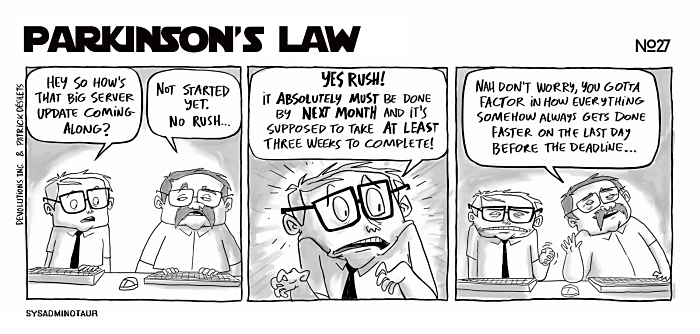Time runs differently for startups. Entrepreneurs and their teams feel like they’re in a warped dimension where there aren’t enough hours in the day, and months just fly by. And yet, the work keeps piling up, and no one can help but think they’re constantly wasting time.
With so much on your plate, things like decision-making, problem-solving, and product development become difficult. But there is a better way of managing time before you burn out.
The 10 time-saving tips below will make you and your team more productive and efficient. So, pause and look at how you spend your work hours.
And naturally, it all starts with saying no.
1. Learn to Say No
**Say No to Networking**
Once your business starts to take off, you may receive an influx of requests and messages, whether on LinkedIn or through email.
People will begin to ask for advice or introductions to other entrepreneurs. And while it is tempting to help others reach their goals, there isn’t enough time to help everyone. It’s okay to tell people no politely.
Don’t ignore people. Just respond with honesty, and you won’t burn bridges.
**Say No to Meetings**
Limit your meetings. Meetings should include only the essential people for the meeting. Eliminate others. A lot of time is wasted on brainstorming and discussions at a table in a room. Set an agenda and a timeframe, and take notes.
Never meet on a Monday. People won’t be prepared. Never meet on a Friday. People won’t care.
**Say No to Opportunities**
Believe it or not, not all opportunities are good for a growing startup. Not all investors benefit you, nor is every industry conference or event invitation.
Gauge your time, resources, and efforts – assess whether the return on time invested will benefit the company in the long run.
**Say No to Distractions**
Similarly, jumping at every good idea you get might be tempting, whether related to your product (or service), like a new feature, or an idea to develop something new on the side.
How do you know if it’s a distraction? If it does not directly help you achieve your primary business objective, then it’s a distraction. Your business’s growth should take up all of your focus first. Consider side-projects later.

Credit: codinghorror.com
2. Forget Multitasking
There’s been a shift in the idea of “multi-tasking” being a virtue. It turns out that focusing on one thing at a time takes less time than having to keep fixing mistakes due to lack of attention.
In fact, chronic multitasking, according to Professor Clifford Nass, can kill your ability to focus. Focusing takes willpower, and willpower works like a muscle. If you don’t use it, your ability to focus will atrophy.

Credit: practicalecommerce.com
3. Make Prioritization Easier
Use the Eisenhower Matrix to help you decide on what you should work on first by putting tasks into one of the four quadrants (see above) based on importance and urgency:
- Do First
- Decide
- Delegate
- Delete It
The Eisenhower Matrix is just a tool. As a startup, you should use it with one guiding principle articulated best by the legendary entrepreneur Paul Graham of Y Combinator.
Paul Graham says startups should use the growth of their business as a compass to navigate every decision. In other words, when presented with a choice of what to work on, ask yourself:
How will this task benefit the growth of my company?
If the task does not directly help you achieve your primary business objective (i.e., growth), then it’s a distraction, as we stated earlier.
4. Practice Cathartic Documentation
This is a term coined by Stacy La, the design director at Clover Health. When their company started to grow rapidly, they realized they had a lot of knowledge that needed to be shared. So, they decided to document whatever they could.
This knowledge brain dump felt cathartic because they no longer had to keep all that information in their head. It also helped Clover Health streamline its hiring process, training, and business development.
As La explains, their teams wouldn’t have to reinvent the wheel whenever something needed to be done.
Additionally, you can make so-called ‘playbooks.’ They’re like guidebooks for processes you frequently do and consist of the same steps. That way, people won’t rely on repeatedly asking others for advice on the same things.
5. Use Smart Automation
Automating a process can help you be more efficient, but it’s not always efficient to automate every process.
It takes time and resources to automate a process. And because you’re in a startup environment, processes are always changing. So before you automate a process, ask yourself if the return on investment is worth the effort.
As a best practice, track your time to help you figure out where to start.
6. Consider Using Newsletters
On a broader note concerning unnecessary meetings, start using newsletters and email blasts for announcements, updates, and changes to the company. There is no need to keep teams from working and breaking up their attention.
Newsletters will not only save time but also keep your employees focused. Tools like GoodBits and Revue can make sending team newsletters fast and easy.
7. Use Communication Codes
When it comes to inter-team communication, there are several trends with startups:
- Check emails often in case some are urgent
- Keep your chat open so you’re always accessible
- Your private phone should be available to everyone
However, this opens the door to a very bad habit – when all problems are urgent, no problems are urgent.
William Vanderbloemen, CEO of Vanderbloemen Search Group, devised a clever way to keep his employees from stressing over email urgency.
They have a simple communication code – if you receive an email, respond to it in the next 24 hours; if someone texts you, they need you as soon as you’re available; and a phone call means that you’re either to pick up the phone or call back right away.
Simple, no?
This kind of practice is the best way to manage employee time. Find out which communication code works best for your team and ensure it works towards saving time.
8. Think Good, Not Great
Kevin Miyazaki of Sidebench says your software will always be 85% finished. There is no such thing as a perfect product upon launch. He emphasizes how futile sending such a product out in the market is.
Without it being validated by users, it’s guaranteed you’ll have a lot of bugs, first-day patches, and troubleshooting to go through. So why not launch a good enough product fast enough to gauge your users’ response and work on perfecting it along the way?
It will save you time and direct effort where it is needed.

Credit: Devolutions.net
9. Think Parkinson’s Law
“Work expands to fill the time available for its completion” – C. N. Parkinson
As mentioned in 1955, the quote above related to politics, namely bureaucracy. However, it’s grown more popular in recent years because it perfectly describes a modern phenomenon.
For example, when given a task and a three-day deadline, people will tend to work on it for three days, regardless of whether the task needs three days or an hour.
One way to manage time on product development is to chop the deadline in half, eliminate distractions, focus on your goal, and ship your product.
10. Use Buffer Time
Last but not least, make use of buffer time.
When a client sets a project deadline, finish at least 24 hours earlier. Treat the remaining time as a buffer to fix any problems that might pop up.
Nothing is worse than delivering on time only to realize that a sudden bug, crash, or technical problem will cause you to miss the deadline.
In Summary
Time management might as well be the most crucial skill a business owner and his team can learn. It helps facilitate all other aspects of business and makes problem-solving and decision-making much easier.
As we’ve seen, many successful CEOs, designers, and writers have figured out how managing your time gives a profound understanding of which things are important and which aren’t. And we can all agree that knowing that distinction can be a lifesaver for a startup.
So if you want to get more done in less time, hit the pause button and apply these time-saving tips to make your startup team more productive and efficient at work.
Editor’s Note: The article is part of the blog series Run Your Business, brought to you by the marketing team at UniTel Voice, the virtual phone system priced and designed for startups and small business owners.






